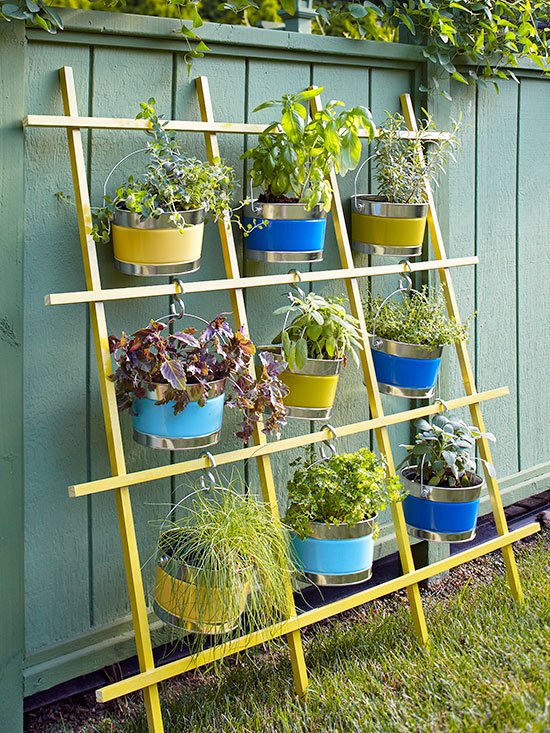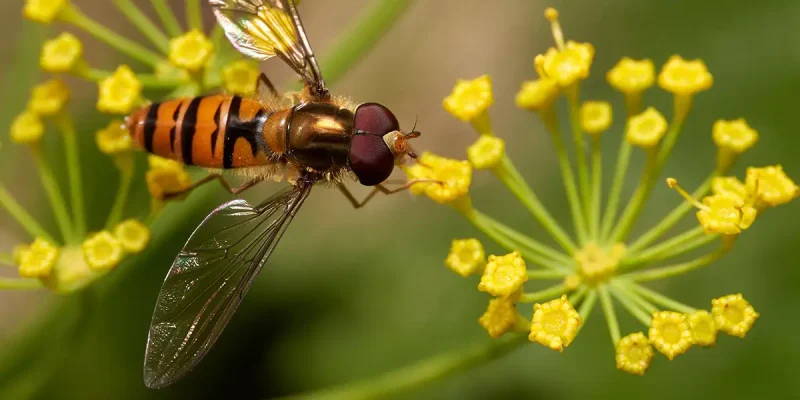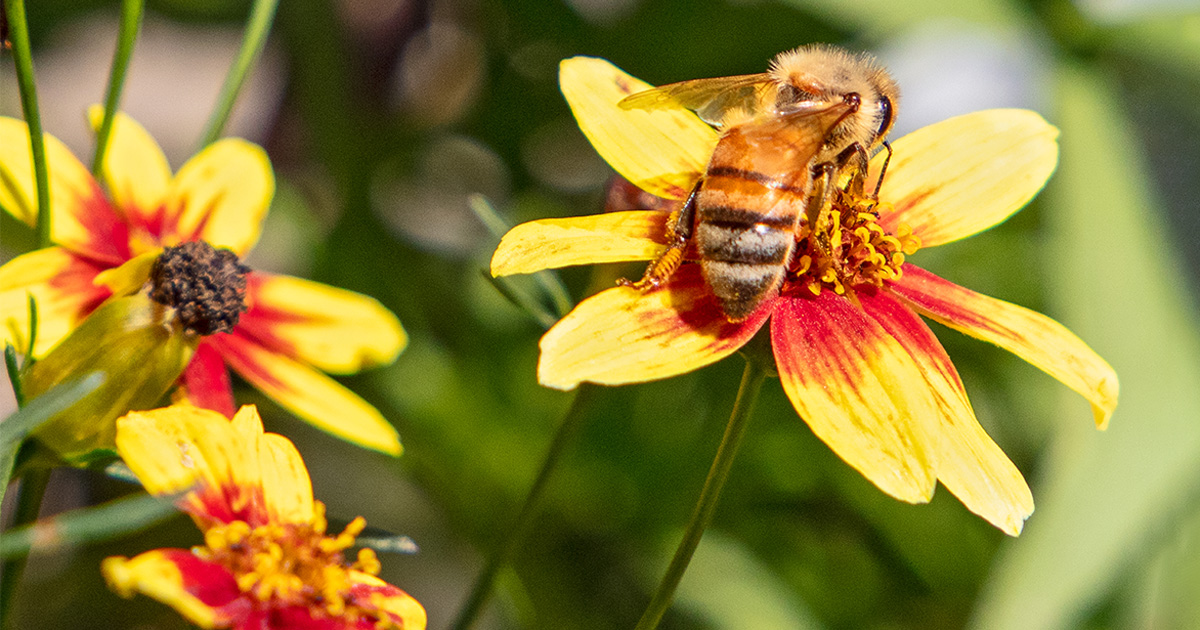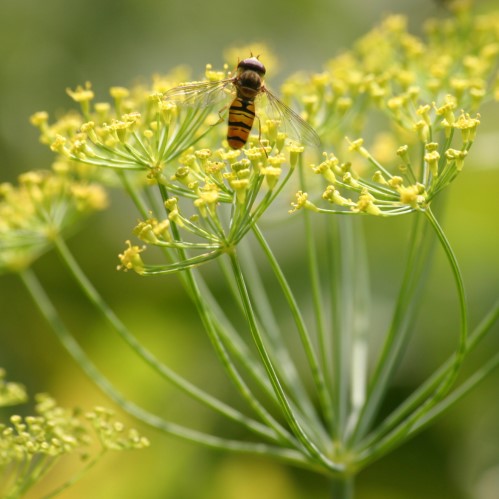
Blooming Allies: Creating a Garden Oasis for Beneficial Insects

Are aphids making your kale look more like Swiss cheese? Tired of battling squash bugs? Nature has an answer! Instead of reaching for harsh chemicals, consider harnessing the power of beneficial insects. These tiny garden allies – ladybugs, lacewings, hoverflies, and parasitic wasps – are natural predators of common garden pests. Attracting them is crucial for a healthy and productive garden, creating a balanced ecosystem where pests are kept in check, naturally.
Many people only think about attracting bees to their gardens, but we can help our ecosystem more by expanding our efforts to attract a wider variety of beneficial insects. In this post, we'll explore how to create a "living insectary" – a garden that attracts and supports these amazing creatures, naturally reducing pest problems and boosting your "homegrown" harvest. Welcome these incredible creatures into your "organic gardening" space to build a more "sustainable home."
Key Takeaway: Beneficial insects are essential for natural pest control, and we can attract them with the right plants.
Understanding Your Garden's Needs
Before you rush out and buy a truckload of flowering plants, it’s important to understand the specific needs of your garden. Just like you wouldn’t plant tomatoes in a shady spot, you need to tailor your plant choices to attract the right beneficial insects for your garden’s unique situation.
Assess your current pest problems: What pests are common in your garden? Aphids? Squash bugs? Cabbage moths? Identifying your foes helps you choose plants that attract insects that prey on them.
Identify existing beneficial insects: Have you spotted ladybugs, lacewings, or hoverflies already? Knowing this helps you build on what's already working, providing more of what they already like.
Consider your local climate and soil conditions: Choose plants that thrive in your region to ensure they attract the right insects. This is about "seasonal harvest" planning: what flowers bloom at what time, and what do the good bugs need then? Are you having a particularly dry year? Add a water source!
Support the local food movement: Choose plants that support beneficial insects AND provide edible harvests. Double duty! Herbs like dill and fennel are a perfect example.
Key Takeaway: Knowing your garden's existing ecosystem is crucial for attracting the most beneficial insects and ensuring your plants thrive.
Top Plant Picks for Attracting Beneficial Insects
The secret to creating a living insectary lies in choosing the right plants. You need to provide a continuous supply of nectar, pollen, shelter, and even alternative food sources to keep your beneficial insects happy and healthy.
Nectar-Rich Flowers: Providing Food
These plants act as a buffet, providing the vital energy that adult beneficial insects need to thrive.
Yarrow: This hardy perennial is a magnet for ladybugs and parasitic wasps. Its clusters of tiny flowers provide easy access to nectar and pollen. Parasitic wasps will lay their eggs inside aphids, and ladybugs will devour any aphid, mealybug, or mite in sight!
Dill and Fennel: These herbs attract a wide range of beneficial insects, including ladybugs, hoverflies, and parasitic wasps. Let them flower for maximum impact. Be sure to look up the specific type you are planting. Queen Anne's Lace dill is particularly attractive to beneficial insects.
Sunflowers: These majestic blooms offer a large, accessible source of pollen and nectar for a variety of beneficial insects.
Alyssum: This low-growing annual is a favorite of hoverflies. Its delicate, honey-scented flowers are irresistible to these important pollinators, and their larvae are voracious aphid predators.
Zinnias: These colorful annuals attract a wide array of pollinators, including butterflies, bees, and hoverflies.
Important: Provide a succession of blooms throughout the growing season to ensure a continuous food source for your beneficial insect allies. Plant early-blooming species like alyssum alongside later-blooming varieties like zinnias and sunflowers. Consider planting in clusters, rather than single rows. It's better for the insects, and contributes to a beautiful "farmhouse life" aesthetic!

Shelter and Habitat: Providing Homes
Many beneficial insects need shelter to overwinter, hide from predators, and lay their eggs. Providing the right habitat is just as important as providing food.
Native Grasses: These grasses provide overwintering habitat for many beneficial insects. Leave some standing over the winter, then cut them back in early spring.
Dense Shrubs: Provide shelter and nesting sites for a variety of beneficial insects. Native shrubs are always the best choice.
Plant Debris: Leave some plant debris in the garden over winter to provide overwintering habitat for beneficial insects. Fallen leaves and dead stems can provide a safe haven for insects seeking shelter from the cold. Let some areas of your garden go a little wild. Appeal to the insects in your backyard through creating "cozy living" spaces with protective shelter.
Trap Crops (and How to Avoid Them)
Trap crops can be a double-edged sword. While they can attract pests away from your main crops, they can also become breeding grounds if not managed properly.
- Nasturtiums: These attractive flowers are a magnet for aphids, drawing them away from your vegetables. However, if the aphid population on the nasturtiums gets out of control, it can become a problem.
- Attract beneficial insects to the trap crop area! Lacewings, ladybugs, and hoverflies will take care of the aphids, keeping their population in check. This maintains a balance!
Key Takeaway: Choosing the right plants provides food and shelter for beneficial insects, contributing to a healthier garden ecosystem.
Creating the Ideal Habitat
Providing the right plants is only part of the equation. To truly attract and retain beneficial insects, you need to create a welcoming habitat that meets all their needs.
Water Source
Water is essential for beneficial insects, especially in dry climates. They need it for drinking, bathing, and laying their eggs.
Provide a shallow dish with pebbles, a birdbath, or even a small container of water with a sponge in it. The pebbles or sponge will prevent the insects from drowning. Change the water regularly to prevent mosquito breeding.

Avoid Pesticides
This is absolutely crucial. Broad-spectrum pesticides can harm or kill beneficial insects, negating all your hard work.
Use organic gardening practices and natural pest control methods: hand-picking pests, using insecticidal soap as a last resort, and promoting healthy soil. Reiterate the use of "organic gardening" to protect the beneficial insects.
Composting for a Healthy Ecosystem
- Healthy soil supports healthy plants, which in turn attract beneficial insects. It all starts with the soil!
- Composting improves soil structure, adds nutrients, and increases water retention, creating the perfect environment for plants to thrive.
Key Takeaway: Providing water, avoiding pesticides, and composting contribute to a healthy and thriving habitat for beneficial insects.
Attracting Specific Insect Allies
Different beneficial insects have different preferences. By understanding their specific needs, you can tailor your plant choices to attract the insects you want in your garden.
Ladybugs
Ladybugs are voracious predators of aphids, mealybugs, and other soft-bodied pests.
Attract them with dill, fennel, cilantro, and angelica.
Lacewings
Lacewing larvae are also voracious predators of aphids, spider mites, and thrips.
Attract them with yarrow, dill, goldenrod, and sunflowers.
Hoverflies
Hoverfly larvae feed on aphids, while the adults pollinate flowers.
Attract them with dill, fennel, alyssum, and zinnias.
Parasitic Wasps
Parasitic wasps lay their eggs inside other insects, eventually killing them. They are a highly effective form of natural pest control.
Attract them with yarrow, Queen Anne's lace, and dill.

Key Takeaway: Targeting specific beneficial insects can help control specific pests in your garden, creating a more balanced ecosystem.
A Thriving, Balanced Garden
Creating a living insectary is an ongoing process. By providing the right plants, habitat, and protection, you can create a thriving, balanced garden ecosystem where beneficial insects flourish. Start small and gradually incorporate these tips into your own garden. You’ll be rewarded with fewer pests, healthier plants, and a more beautiful and enjoyable outdoor space. As you plan your spring garden, consider these plant choices to set the stage for a pest-free and bountiful harvest. We are working towards "sustainable home" and "backyard projects" that benefit both nature and our family.
What are your favorite ways to help pollinators flourish? Share your experiences with attracting beneficial insects in the comments below! For more information on organic gardening and beneficial insects, visit the Xerces Society website.